Camp Glenorchy
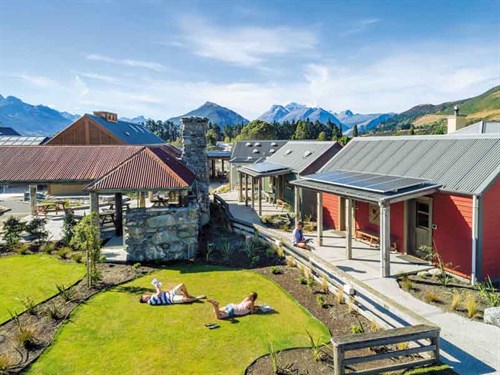
Situated at the head of Lake Wakatipu, Camp Glenorchy officially opened in March 2018. It offers cosy en-suite cabins, bunk huts, and motorhome and campervan sites. Nothing unusual there you’d think, but there is.
The creators of Camp Glenorchy set goals around building design, materials used, and operating practices so that the camp is as near to self-sustaining as possible electrically, has minimal water consumption, and is built using environmentally friendly materials.
Right from the start, they have committed to:
- a healthy relationship with the environment,
- Net Zero Energy, generating as much energy as they use, and
- minimum waste during construction and operation.
Toxin-free materials were used in structural walls, floors, and roofs and recycled materials were used throughout wherever possible.
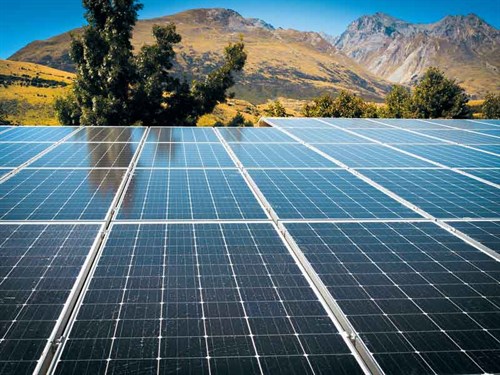
Guests get to use simple, state-of-the-art technology to help reduce water and energy use from displays in each room. They can control their own energy and water use and see how it compares with the usage of previous guests.
Camp Glenorchy founders hope that the camp will inspire guests to incorporate some of these eco-friendly ideas into their own homes and communities. Read more about Camp Glenorchy in our June issue.
EVs encouraged to travel the Coromandel EV Scenic Touring Route
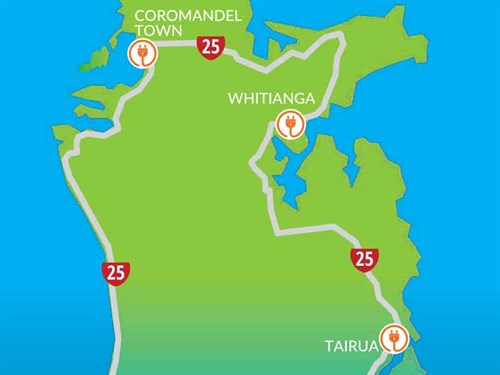
In December 2017 in Whangamata, the Thames-Coromandel District Council activated the final fast-charging station for electric vehicles in a network of stations circling the Coromandel Peninsula.
The Thames station was activated in September 2016, Tairua in May 2017, followed by Whitianga and Coromandel in November 2017. These chargers have been installed, thanks to the collaboration of Thames-Coromandel District Council, Charge Net NZ, Powerco, and the Energy Efficiency and Conservation Authority.
These organisations are involved because they have vested interests in the rollout of infrastructure supporting the use of electric vehicles.
The council’s motivation is tourism, Powerco provide the power transmission lines, ChargeNet set up the charging stations and customer payment system, and the Energy Efficiency and Conservation Authority represent the government’s interest in reducing New Zealand’s carbon footprint.
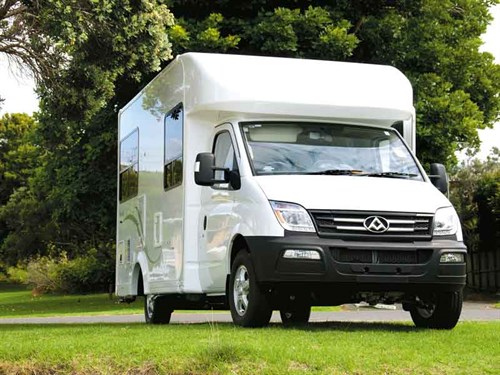
ChargeNet NZ is building a nation-wide network of Rapid DC Chargers with more than 60 stations operational and 105 stations the goal by 2019. Electric vehicles have built-in chargers but they have limited capacity and typically take six hours or more to fully charge a car.
ChargeNet’s Rapid DC Charger converts high-power three-phase AC into powerful DC current and bypasses the on-board charger, reducing the charge time to a much more acceptable 30 minutes or less.
Access to the charger and payment for the electricity is via a ChargeNet NZ RFID card (a card with a chip, like a pay-wave credit card), which drivers use to activate the charging unit.
LDV EV80 Electric Van
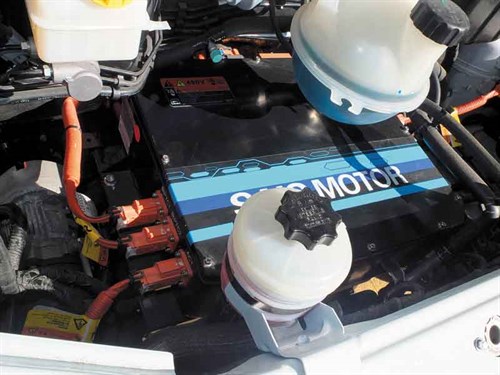
The LDV EV80 Electric Van has arrived in New Zealand. To the casual eye, it appears to be the same as LDV’s best-selling diesel-powered V80 van.
Built using the same body panels as V80, the EV model has the same basic features as the diesel V80. Lift the bonnet though and you’ll notice the difference. In place of the internal combustion motor is an electric motor about the size of an airline carry-on suitcase.
If you look underneath the vehicle, you’ll notice the other big difference—the 400kg of safe, super-efficient lithium iron phosphate battery.
Having to carry this reduces the EV80 payload to 1000kg compared with 1500kg for the V80. This battery can be fully charged in two hours on a rapid charger, compared with 16 hours on a domestic wall socket.
In normal operation, described as a mix of urban and open road driving, these batteries give the EV80 a range of around 180km. Helping achieve this are two highly-efficient powertrain components—the Permanent Magnet Synchronous Motor and the aforementioned lithium iron (yes, iron not ion) phosphate batteries.
Both the EV80 and the diesel-powered V80 have the same power output of 100kW but surprisingly, the diesel motor produces 10Nm more torque.
Currently, the EV80 retails at $80,000, more than twice the price of the regular diesel V80, so it is a niche market product. But in situations where noise and exhaust emissions are a no-no, the EV80 is the go-to vehicle.
Although recently released in New Zealand, the EV80 has been on sale in China since 2014 and the United Kingdom—its first export market—since 2016.
Small numbers of EV80s have already been delivered to New Zealand customers, so the question is: how long will it be before we see an LDV EV80 motorhome touring the Coromandel EV circuit?





